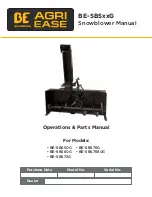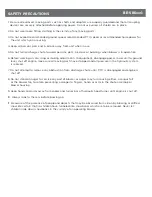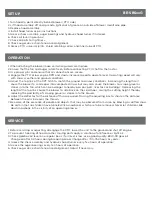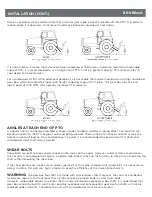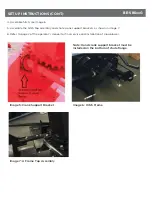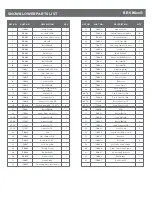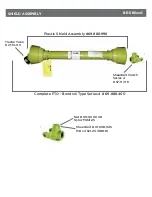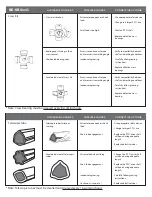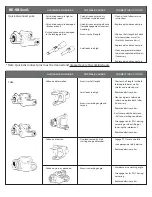
SAFETY PRECAUTIONS
BE-SBSxxG
1. Be sure all exposed moving parts such as shafts and adapters are properly guarded and that all coupling
devices are securely attached before applying power. Do not use unless all shields are in place.
2. Do not wear loose fitting clothing in the vicinity of any moving parts.
3. Do not exceed recommended ground speed, recommended PTO speed or recommended horsepower for
the unit which you are using.
4. Keep all persons, pets and livestock away from unit when in use.
5. Do not turn discharge chute towards persons, pets, livestock or buildings when blower is in operation.
6. Before working on, servicing or making adjustments to equipment, disengage power, lower unit to ground
level, shut off engine, make sure all moving parts have stopped and all pressure in the hydraulic system
is relieved.
7. Do not attempt to remove any obstruction from discharge chute until PTO is disengaged and engine is
shut off.
8. Do not stand on auger to service any part of blower, as auger may turn causing either, a serious fall;
or the blower fan to rotate, presenting a danger to fingers, hands or arms in the chute assembly or
blower housing.
9. Keep hands and arms away from cables and turner bar of hydraulic hood turner until engine is shut off.
10. Always look to the rear before backing up.
11. Be aware of the presence of people and objects that may be obscured from vision by blowing or drifted
snow. Be certain that no children have tunneled into snowbanks which are to be removed. Never let
children slide down snowbanks in the vicinity of an operating blower.
Summary of Contents for BE-SBS G Series
Page 9: ...SNOWBLOWER DIAGRAM BE SBSxxG...
Page 15: ......

